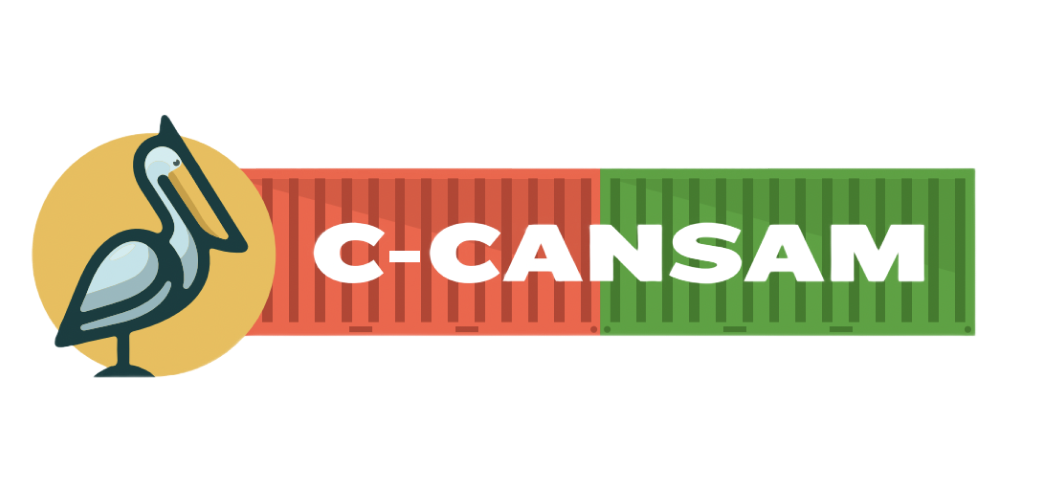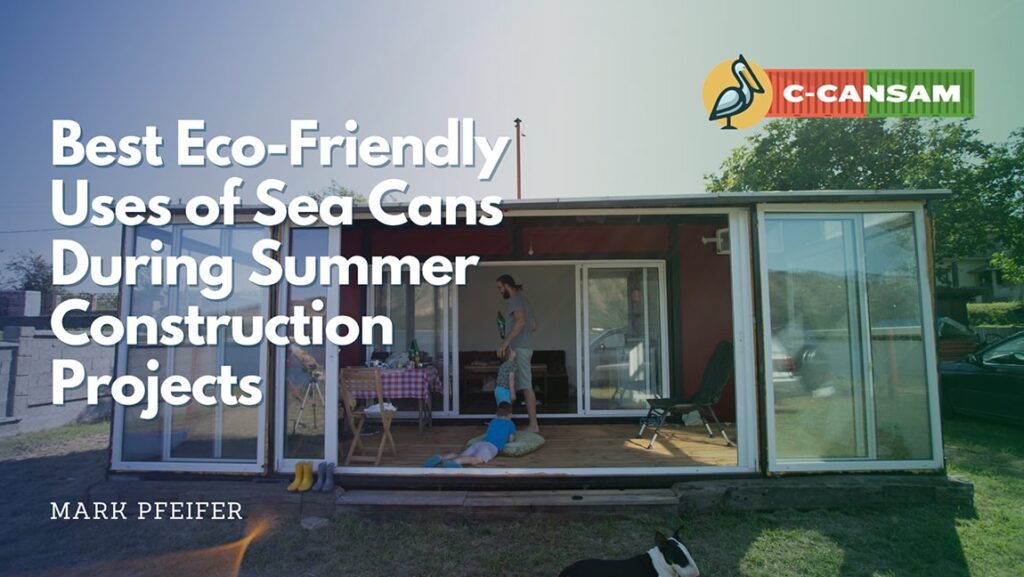Explore Eco Friendly Uses Of Sea Can For Smarter, Faster, and Cleaner Summer Construction Projects
Introduction
Summer in Canada means construction season is in full swing. From new housing developments to infrastructure upgrades and community projects, contractors and developers are racing against the clock to make the most of the warmer months. But with increased activity comes a growing need for smart, sustainable solutions — especially when it comes to on-site space.
Enter the sea can — that sturdy, steel shipping container you’ve probably seen stacked at ports or parked at job sites. Once used to haul goods across oceans, these retired containers are now getting a second life as eco-friendly, versatile structures across Canada.
And the best part? Using sea cans isn’t just practical — it’s a genuinely green choice. Whether you’re building temporary offices, affordable housing, or even urban farms, repurposing sea cans helps reduce waste, cut down on carbon emissions, and supports sustainable development.
Let’s take a look at how sea cans are being used in smart, eco-conscious ways during summer construction and why more Canadian builders are turning to them.
Why Sea Cans Are a Sustainable Choice for Summer Construction in Canada
You might not think a metal box from a cargo ship has much to do with sustainability, but sea cans are one of the easiest ways to recycle industrial materials into functional spaces.
Watch this video, of Cathi and her husband Trevor downsized to this ultra-modern shipping container home built with 4 units of 20ft used containers three years ago after their sons had left home and the couple has been living in ever since.
Every year, thousands of shipping containers are taken out of service. Instead of being melted down a process that uses massive amounts of energy, many are cleaned up, repaired, and reused. That’s where the environmental win starts.
By giving sea cans a new purpose, we’re keeping them out of landfills, reducing the demand for new building materials, and lowering the overall carbon footprint of construction projects.
In Canada, where environmental regulations are tightening and public interest in green building is growing, using sea cans makes both ecological and economic sense.
Environmental Benefits of Repurposing Sea Cans
Think about it: a single sea can is made from high-grade corten steel, designed to survive years at sea. That durability means it can last decades longer when repurposed — with minimal maintenance.
Reusing these containers avoids the environmental cost of manufacturing new steel or wood-framed structures, which require mining, processing, transportation, and energy-intensive fabrication.
Plus, because sea cans are modular and pre-built, they don’t require traditional foundations or long construction timelines. That means less site disruption, fewer materials used, and less waste generated on-site.
It’s a simple idea — reuse what already exists — but it has a real impact. As highlighted in The Environmental Benefits of Reusing and Repurposing Shipping Containers, giving sea cans a second life reduces waste, lowers carbon emissions, and supports a more sustainable construction industry.
How Sea Cans Reduce Construction Waste and Carbon Emissions
The construction industry is one of the biggest contributors to waste and greenhouse gas emissions in Canada. But sea cans help tackle both problems.
When you use a sea can instead of building a conventional temporary structure, you’re skipping the need for:
- Lumber, drywall, and insulation
- Concrete foundations
- On-site framing and finishing
That translates into fewer trucks on the road, less energy used, and significantly less debris ending up in landfills.
And because sea cans are built to be stacked and moved, they’re perfect for temporary summer projects. Once the job’s done, they can be relocated or resold — not demolished.
This kind of circular economy approach is exactly what’s needed to make Canadian construction more sustainable.
Most Popular Eco-Friendly Applications of Sea Cans
It’s not just about storage anymore. Today, sea cans are being transformed into all kinds of functional, energy-efficient spaces — especially during the busy summer construction season.
Here are two of the most common and impactful uses.
Energy-Efficient Temporary and Permanent Housing
Affordable housing is a major challenge across Canada, and sea cans are playing a role in solving it.
Modular housing units made from sea cans are being used for:
- Worker accommodations on remote job sites
- Emergency shelters
- Permanent low-income or transitional housing
Because the containers are already structurally sound, they can be insulated, fitted with windows and doors, and connected to utilities quickly. Many projects are even integrating solar panels, rainwater collection, and passive heating/cooling designs to make them even more sustainable.
And since summer is the ideal time for assembly and site prep, many of these builds happen between May and September.
Community Spaces, Pop-Up Offices, and Public Amenities
Need a site office, a washroom facility, or a community kiosk for a public project? Sea cans are being used for all of it.
Municipalities and contractors are converting them into:
- On-site administrative offices
- Washroom and change-room units
- Mobile clinics or vaccination stations
- Pop-up libraries, cafes, or visitor centers
These spaces are quick to install, easy to move, and can be customized to meet specific needs. They also leave a much smaller environmental footprint than traditional temporary buildings.
Innovative Green Projects Using Sea Cans
Beyond basic housing and offices, some of the most exciting uses of sea cans are in innovative green technology and urban sustainability.
Urban Gardens, Green Roofs, and Vertical Farming
Yes, you can grow food in a sea can.
Across cities like Toronto, Vancouver, and Montreal, entrepreneurs and community groups are turning sea cans into vertical farms and urban greenhouses. With hydroponic systems and LED lighting, these containers can produce fresh vegetables year-round — even in tight urban spaces.
During summer, they’re used to support community gardens, educational programs, and local food initiatives. Some are even placed on rooftops or vacant lots, turning underused areas into productive green zones.
It’s a creative way to combine recycling with food security and environmental education.
Solar-Powered Workstations and Off-Grid Solutions
For remote construction sites or off-grid projects, power can be a challenge. But sea cans are being converted into self-sufficient solar-powered stations.
Equipped with:
- Solar panels
- Battery storage
- Energy-efficient lighting and outlets
These units provide reliable power without relying on diesel generators. They can run tools, charge equipment, or support communications — all while running on renewable energy.
It’s a smart, clean solution that’s gaining traction in northern and rural areas where access to the grid is limited.
Best Practices for Eco-Friendly Sea Can Reuse
If you’re thinking about using a sea can for your next project, here are a few tips to make sure it’s as green and efficient as possible.
Insulation Solutions for Better Energy Efficiency
One of the biggest concerns with sea cans is temperature control — steel heats up fast in the sun and cools down quickly at night. But with proper insulation, that’s easy to fix.
Spray foam, rigid board, or eco-friendly wool insulation can keep the interior comfortable year-round. Adding reflective roofing or a green roof can also reduce heat absorption.
Proper insulation means less reliance on heating and cooling systems — which means lower energy use and costs.
Responsible Recycling and Maintenance Guidelines
Not every sea can is in perfect condition. Before reuse, check for:
- Surface rust (can be treated)
- Major dents or structural damage
- Floor integrity (wood floors can rot over time)
Choose containers that have been inspected and certified for reuse. And if a container *can’t* be reused, make sure it’s recycled responsibly — steel is 100% recyclable and can be used again in new products.
Regular maintenance — like repainting, sealing joints, and checking for corrosion — will extend its life and keep it safe for long-term use.
Wrapping It Up — Smart, Sustainable, and Ready to Go
Sea cans aren’t just leftover shipping boxes — they’re powerful tools for sustainable construction in Canada. Whether you’re building housing, offices, green spaces, or off-grid stations, these containers offer a cost-effective, durable, and environmentally responsible solution.
And with summer being the prime time for setup and installation, there’s no better season to start your next eco-friendly project.
By reusing sea cans, we’re not just saving materials — we’re building smarter, cleaner, and more resilient communities.
Frequently Asked Questions
Do sea cans require special permits or government incentives for eco-friendly reuse in Canada?
It depends on your location and how you plan to use the container. Some municipalities require permits for permanent structures, while others have relaxed rules for temporary use. A few regions even offer incentives for sustainable building practices. Always check with your local building authority before starting your project.
What are some common misconceptions about the sustainability of sea cans?
One big myth is that all sea cans are “dirty” or unsafe to use. In reality, most are thoroughly cleaned and inspected before reuse. Another misconception is that modifying them isn’t worth the effort — but with proper insulation and design, they can be just as comfortable and efficient as traditional buildings.
Can sea cans be used for business purposes beyond housing during construction projects?
Absolutely. Many businesses use sea cans as pop-up shops, mobile offices, storage units, or even cafes and retail spaces. Their durability and portability make them ideal for temporary or expanding operations — especially during the busy summer months.
If you’re planning a summer construction project and want to go green, consider starting with a sea can. With the right prep and vision, one old shipping container can become something truly new and truly sustainable.

